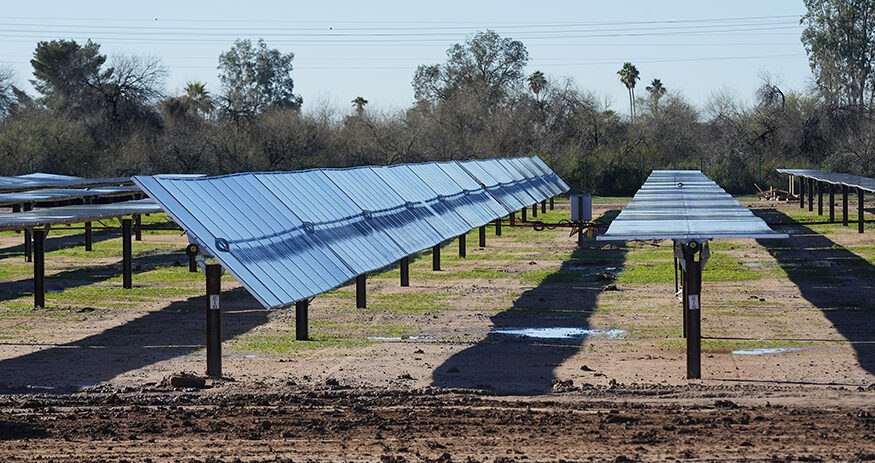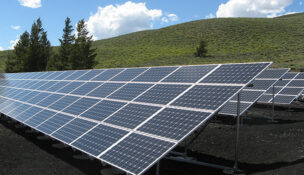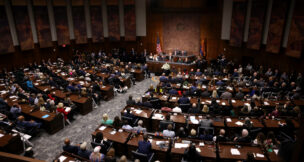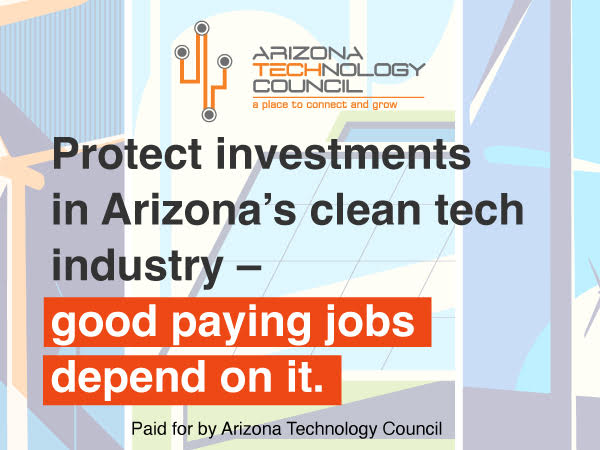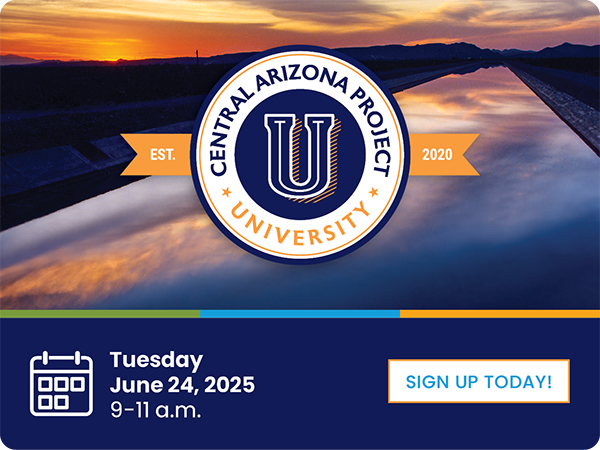Arizona is a magnet for renewable energy investment
By Andy Tobin//August 29, 2024//
Arizona is a magnet for renewable energy investment
By Andy Tobin//August 29, 2024//
Arizona is a pro-business state and our commitment to free enterprise has attracted jobs and investment from many different industries, including technology, health care and aerospace.
But you can also add renewable energy to the list of industries that are booming here.
Renewable energy now provides about 17% of the state’s electricity. Solar panels are the largest provider of renewable energy in Arizona, followed by hydroelectric dams and wind farms.

In fact, Arizona is the fifth largest state in the U.S. in terms of solar-powered electricity production. Solar installations in our state generate enough electricity to power more than one million homes.
A newly released report from The Western Way – a conservative nonprofit focused on energy policy – shows how much our state economy has benefited from the construction of local, secure and affordable sources of renewable electricity in Arizona.
More than 22,000 jobs are supported by the state’s solar industry alone, according to the report, which was prepared by the Rounds Consulting Group.
The total annual economic impact of the Arizona solar industry currently stands at $7.3 billion, including $2.2 billion in paychecks to workers in 2023.
Investment, jobs and spending tied to the solar industry is also a major generator of tax revenue. In 2023, the industry contributed more than $83 million in state tax revenue, more than $50 million in revenue for cities, towns, school districts and other local governments, and more than $21 million for counties.
Harder to quantify, but every bit as important, is the way local investment in Arizona’s power grid supports the growth of other industries.
Before this wave of investment began, Arizona was staring down the barrel of long-term dependence on imported sources of energy, especially natural gas, which we do not produce locally and have to buy from other states.
But now we are taking advantage of the plummeting cost of renewable energy technologies, especially solar and battery storage, to reduce that dependence and the price volatility that goes with it. Cheaper and more stable energy costs are a major draw for new businesses and a big reason for existing businesses to stay in Arizona.
A high-profile example, of course, are the semiconductor manufacturers and other technology companies moving to Arizona. They aren’t just large consumers of electricity – in many cases they want to use as much renewable electricity as possible to power their operations.
That’s the good news – but now, a few words of caution.
Despite the impressive build out of renewable energy and battery storage facilities in Arizona, we are still performing far below our potential.
For example, while Arizona ranks fifth in the country for the amount of solar power produced, we have the second-highest potential for generating solar power in the country. Only our neighboring state of Nevada has a bigger potential for generating electricity from the sun than we do.
The barriers to future growth in the state’s renewable energy sector aren’t primarily technological or financial. For the most part, the barriers are regulatory.
Like many Western states, Arizona has to deal with notoriously slow federal permitting processes. Roughly 40% of the state’s land area is controlled by the federal government.
There are bipartisan efforts in Congress and within the executive branch to speed up federal permitting, but it’s still unclear whether these efforts will produce good results.
But for the attention that’s rightly paid to the federal government, there are state and local hurdles to clear as well.
For example, the Arizona State Land Department will play a huge role in determining the future of solar and other renewable energy development.
This will require careful analysis to incorporate renewable energy priorities into decisions over selling or leasing state lands for purposes other than residential and commercial property development – and that work has only just begun.
Meanwhile, on private land, county and municipal governments take a leading role in permitting. The process can often be overly complex and subject to the whims of “not in my backyard” objections that other forms of development – like residential and commercial construction – don’t face as often.
A smoother and more efficient permitting process at the state and local level would certainly help the state realize its full potential as a renewable energy powerhouse – and deliver the state and local job growth, tax benefits, and energy security benefits that go along with it.
Andy Tobin is former speaker of the Arizona House and a former member of the Arizona Corporation Commission. He is president and owner of Tobin Business Solutions LLC, and director of The Western Way’s Arizona Rural Energy Network.

